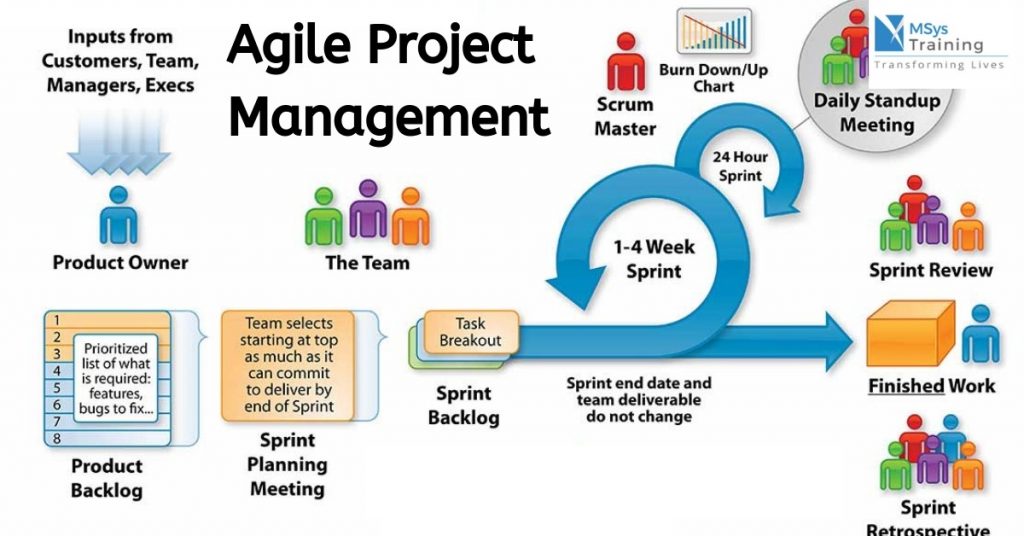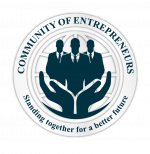What is agile project management?
Agile Project Management (APM) is an iterative approach to project preparation and directing procedures that breaks it down into smaller cycles called sprints or iterations which are later prioritized by the team in terms of importance.
“The word Agility means mobility, and from the Latin agere it means: keep in movement. This literally implies the ability to change something in a fast way that allows for simple direction changes.”
Thus, in terms of project management, “agility” has five essential attributes that shape the foundation blocks of the Agile process. There are:
- Transparency
- Customer focus
- Adaptability
- Sense of Ownership (Effective Leadership)
- Continuous Improvement

Who uses Agile project management?
Originally created for software development, the Agile approach to project management is quickly being adopted by more than just IT teams.
- Marketers,
- Universities,
- The military,
- And even the automotive industry.
The different Agile frameworks allow the delivery of innovative products in uncertain environments.
What are the 4 core values of the Agile Manifesto?
- Individuals and interactions over processes and tools
- Working software over comprehensive documentation
- Customer collaboration over contract negotiation
- Responding to change over following a plan
These core values are at the forefront of all agile project management practices serving as the North Star for any team, informing everything from standard operating systems to the 12 agile project management principles.
What are the 12 principles of Agile?
- Our highest priority is to satisfy the customer through early and continuous delivery of valuable software (or anything else).
- Welcome changing requirements, even late in development. Agile processes harness change for the customer’s competitive advantage.
- Deliver projects frequently, from a couple of weeks to a couple of months, with a preference for the shorter timescale.
- Coordinating team members must work together daily throughout the project.
- Build projects around motivated individuals. Give them the environment and support they need and trust them to get the job done.
- A face-to-face conversation is the most efficient and effective method of conveying information to and within different teams.
- The final product is the primary measure of progress.
- Agile processes promote sustainable development. All stakeholders should be able to maintain a constant pace indefinitely.
- Continuous attention to technical excellence and good design enhances agility.
- Simplicity—the art of maximizing the amount of work not done—is essential.
- The best architectures, requirements, and designs emerge from self-organizing teams.
- At regular intervals, the team reflects on how to become more effective, then tunes and adjusts its behavior accordingly.
Key components of Agile project management
- User stories: A work request that provides enough information to allow the team to estimate the amount of effort needed to complete the request.
- Sprints: Sprints are a short iteration, usually between one and three weeks to finish, where teams work on tasks set in the sprint planning meeting. Continue replicating these sprints until the product is ready.
- Daily Stand-up meetings: Usually under 10 minutes; are a great way to ensure everyone is on track and informed.
- Agile board: a board or software that helps your team track the progress of your project.
- Backlog: A product backlog is a prioritized list of deliverables (features) to be completed as part of a project or product creation.
Agile team roles
- Scrum Master: Ensures that each sprint remains on course and tries to overcome or resolve any difficulties that may occur. They are the advocates of the squad.
- Project owner: Identify the priorities of each sprint, handle and prioritize the backlog of the team and be the voice of the client or the internal stakeholder.
- Team members: Typically between three and seven individuals, they are those who perform the job in each sprint. They may have different specialties or they can have the same job roles.
- Stakeholder: It’s just an informational role. Stakeholders should be kept up-to-date with the product and sprint priorities, have the ability to revisit and support the work during the sprint, and give input during the sprint retrospective.

What are the 6 steps in the Agile methodology?
1. Project planning
Before starting, your team should recognize the end goal, the value to the customer, and how it can be accomplished.
2. Product roadmap creation
A Roadmap is a breakdown of the features that illustrate the finished product. Your team will pull the tasks out of the backlog and develop these individual features at every sprint.
3. Release planning
This involves making a high-level plan. Development cycles in the agile approach (sprints) are relatively short and efficient. So, in order to deliver a single working product, it must undergo several sprints before reaching the customer.
The specifications of the first product to be released are prioritized during release. Usually, release schedules for future products will be reviewed on the day of the first product launch.
4. Sprint planning
Until each sprint starts, stakeholders need to hold a sprint planning meeting to decide what each individual will do, what will be accomplished, and to evaluate the work load.
Effective sprint planning is decided by the engagement and input of opinions and suggestions from managers, owners and team members.
5. Daily stand-ups
To help the team execute their duties after each sprint and determine if any adjustments need to be made, hold brief daily stand-up meetings (no longer than 15 minutes). During these sessions, each member of the team will quickly discuss what they did the day before, and what they’ll be working on that day.
6. Sprint review and retrospective
After the end of each sprint, your team will hold two meetings:
- A sprint review with project stakeholders to demonstrate the finished product.
- A retrospective sprint meeting with the stakeholders to address what went well during the sprint, what should have been different, and if the workload was too heavy or too light for each participant.
The review and the retrospective shall proceed until the final product is released. Then the whole sequence of Stage 1 repeats.
Pros and cons of the Agile Approach
Advocates for Agile Project Management argue that there are several advantages to the technique. They include:
- Rapid implementation of ideas,
- More effective utilization of resources,
- Greater versatility and adaptability to changing needs,
- More rapid problem detection, and
- Increased cooperation with users.
There are also potential disadvantages, however:
- A tendency for projects to go off track,
- A lack of documentation,
- Less predictable outcomes,
- Not suitable for long period projects, and
- Poor for organizations that take decisions to a committee.
| References – For more information, see the following websites: |
| https://www.workfront.com/project-management/methodologies/agile https://searchcio.techtarget.com/definition/Agile-project-management https://kanbanize.com/agile/project-management |

Leave A Comment?